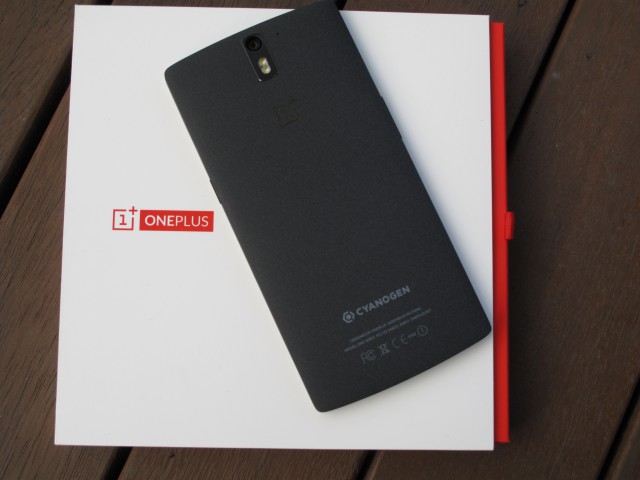
Late last year a new company emerged from China headed by Pete Lau, a former VP of Oppo – a pretty well-established Chinese phone manufacturer. The name of the new company was OnePlus and they quickly introduced their idea of a phone, which was a no compromise device with the motto – Never Settle.
From inception to announcement, OnePlus built hype, almost to hysterical proportions. They built it by teasing the spec list from their phone and talking themselves up at every opportunity, using that now famous tagline – Never Settle.
President Pete Lau said throughout the journey that he was making a phone designed for the enthusiast.
Not only is the OnePlus One a phone created with specs that read like a dream, it also runs what’s considered an ‘enthusiasts’ operating system – the latest from CyanogenMod. Together with Cyanogen Inc. OnePlus have created the One from the ground up, optimising the software for the hardware at every single level.
As a new startup, OnePlus hasn’t much in the way of funding or backing, though it did emerge that there is a tenuous link to the same financial backer behind the more established backer Oppo. Nevertheless, OnePlus is operating as a startup. One small miscalculation in required stock levels and they would be gone. No more. Out of business.
So, building on the hype created during the lead up to launch, OnePlus initiated a new way of buying their new super-phone – an invite system. Sounds wacky doesn’t it? Requiring an invite to give someone your money. Whatever your thoughts are on the invite system, they’re rolling out now, and so it’s time to concentrate on the phone itself. It’s time to decide whether the phone which OnePlus themselves call the ‘2014 flagship killer’ actually deserves the moniker.
- CyanogenMod 11S
- Attractive design
- Highend hardware
- Price
- Active bug squashing
- Software bugs
- Menu capacitive button
- Availability
- Size
Hardware
The OnePlus One is a big phone. Actually, if there was a strict definition for a phablet, this would fit comfortably right in the middle of it. Considering it was meant to be a 5.5in screen inside the body of a 5in phone it is big. They can’t escape it, it is a 5.5in screen inside the body of a 5.5in phone. I have never been a big fan of phablets but after using the OnePlus One (OPO) I could be convinced to try one in the future.
The OnePlus One size takes some getting used to. If you have used a phablet before then you will be fine but for those of us who are used to a smaller device, such as a Nexus 5, it takes a while to get used to the hand gymnastics required to operate the device effectively. While I still maintain that I would prefer a phone slightly smaller in size I can see the attraction to a device this big. Consuming media of any sort on this device is a real pleasure. A screen this size made watching movies a real delight. Navigating websites and reading content was easy on the eyes too, my only issue being with the auto-brightness but I’ll discuss that more later on.
OnePlus have considered the user experience closely when designing this device. The power button is on the right hand side of the device, just above halfway up the phone, thus easily reachable while holding the phone comfortably in one hand. HTC should take note. The volume rocker is on the opposite side of the phone at about the same level, once again easily reachable for the average user. Above the volume rocker is possibly the best disguised sim card tray/slot I have ever seen. The only way I knew there was a sim card slot was the presence of the pin hole to eject the sim card tray. The tray sits so flush with the side of the device it is near on invisible.
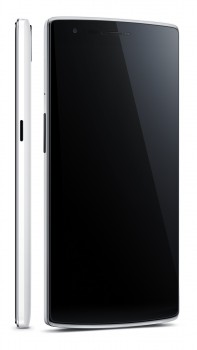 |
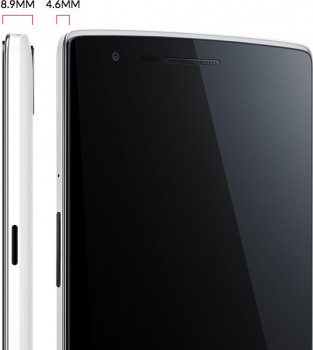 |
On the back of the phone is the 13MP Sony Exmor IMX 214 camera with dual LED flash as well as yet another noise cancelling mike next to the camera. The texture of the back is like a very fine black sandpaper. It really does feel like a blackstone (which is the colour that OnePlus call it). The logos for OnePlus and Cyanogen Inc are on the back of the phone and are both incredibly subtle and classy.
The top of the device holds the headphone jack which annoys me. I would much prefer manufacturers put it in the bottom due to how I put the phone in my pocket and where the headphone will be coming out. Also there is a noise cancelling mike, as small as they are.
The bottom of the device has the usual microUSB charging slot, the microphone, and stereo speakers.
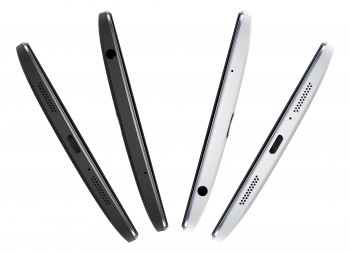
The front of the OnePlus One shows chrome-coloured plastic around the touchscreen, giving the impression of the display sitting upon a piece of metal. It feels and looks great in my opinion. At the top are the usual speaker, proximity sensor, a 5MP front facing camera and a multi-coloured RGB notification light. On the bottom bezel are capacitive buttons, which when turned off cannot be seen unless a light is shined in a certain direction upon them. For some reason OnePlus decided on the capacitive buttons being a menu button, home and a back button. Apparently they missed the memo (as did Samsung) that menu buttons are so 2011. The menu and home capacitive buttons’ actions can be changed although their image cannot which is a small annoyance to me. The actions of long press and double tap to those two capacitive buttons can also be altered to a few other options. I found that giving the home screen a double tap action or long press makes the home button not register it’s presses up to 20% of the time. In the end I gave up on the capacitive buttons and switched to the onscreen soft buttons. This was a much smoother and seamless experience. According to OnePlus the capacitive buttons were included as their Chinese market feel strongly about the presence of capacitive buttons. This Australian feels the opposite. From comments I have read it seems that most of those who prefer capacitive buttons haven’t used a decent phone with software buttons.
Build Quality
The build quality is something that has to be seen and felt to be believed. The device is solid without being heavy. The back cover, while being removable doesn’t feel flimsy in the least. The back cover is the black sandstone variety. There are some international 16GB versions around that are a white colour, or as OnePlus marketing call them, silk white. There is also a Chinese 64GB version (with ColorOS instead of CM11S) that is silk white. The back cover covers not only the back but also the sides of the device and makes for a stylish, seamless look.
At the announcement OnePlus made a lot of noise regarding the shape of the device. While I am not sure I would go to the extremes of their love of the curvature of the back of the device, it does fit well in the hand and feels thinner than the 8.9mm that it actually is at the middle. The edges of the device are in fact only 4.6mm wide, adding to the illusion of a thin phone. In saying that nothing can disguise just how wide this phone is. While it has a smaller screen than the Note 3, it is in fact longer.
The internals of the device are also well thought out. It houses high end specs that match if not beat every other flagship out there. There is the 64GB variant which I purchased and a 16GB variant which is rare. There are international and Chinese versions and making it even more complicated the Chinese version runs ColorOS instead of CM11S. The Chinese version comes in both 64GB and 16GB and in both Silky White and Sandstone Black. The international version comes in 64GB, Sandstone black only at the moment.
The Chinese version can be used in Australia as it has the 1800MHz LTE band but double check what LTE bands are in your area before considering purchasing one of those. Yes, I did say purchasing one of those. The Chinese version can be bought from Chinese websites without an invite for only around $100 more than the international version costs you, should you be lucky enough to obtain an invite. The Chinese version can be easily rooted and CM11S flashed to it should you wish to go down that road. Warranty may be an issue when purchasing from a Chinese store so consider the reputation of the store before purchasing.
Screen
The display is a 5.5” 1080p full HD JDI screen, the same display manufacturer as the HTC One M8 and the Oppo Find 7a. OnePlus advertise the device as having “TOL (Touch On Lens) technology, which removes the distance between the touch sensor and the display panel.” This apparently makes the screen, which is covered with Gorilla Glass 3, three times more shatter-proof than the standard On-Glass-Display. I am yet to test this out (and don’t plan to) and have actually purchased a Godosmith tempered glass screen protector (which of course is 37% cheaper now than when I bought it four weeks ago) so I that may never have to experience this.
I cannot review this phone, nor finish off the section dedicated to the display without commenting on the yellow tint of the screen. There are two aspects to this. The patchy, blotchy, yellow tint of the display (most often at the lower edges- also seen on it’s sister device the Oppo Find 7a) apparently due to glue underneath the display (speculation) and the overall warmer (read yellower here) colour/calibration of the display. OnePlus have officially commented on the second one but not the first, although both are definitely present.
The Oppo Find 7 and 7a earlier in the year had yellow screen issues. Some have speculated it was due to the glue not drying evenly under the screen but Oppo have no confirmed that, although they did replace any devices that had this yellow patchy screen. If you look really closely at my OnePlus One display, on an entirely white image it is possible to make out this yellow discolouration. In saying that it is extremely difficult to see and maybe it is my eyes playing tricks on me but in the end it does not affect the day to day enjoyment of using the device. The apparent defect is not present in all devices, and it is normally subtle, but it is a fact that some users are experiencing it. Would it stop me from purchasing this device? No. Warranty is there for a reason.
The warmer calibration of the display is a deliberate action on behalf of OnePlus. One user said on one of the forums that “the warmer tone is technically more friendly for text viewing and skin tones etc but people don’t tend to like it as they are used to a cold white. Properly calibrated displays are always warmer however, because they tend to reflect a more natural light that mimics the sun.” On a more official note, OnePlus have said that:
While other companies calibrate the displays to make certain colours “pop” OnePlus maintain that they are sticking to an accurately calibrated display. In saying that, OnePlus and Cyanogen Inc are still working on a setting in CyanogenMod where you will be able to customise the calibration of the display more than what you already can within the settings. When I first used the device I found it to be very yellow but now that I have used it for two weeks I can happily say that I do not notice it anymore. The colours seem natural to me now so maybe OnePlus have done the right thing with the display calibration but others know more about screen calibration than I do so feel free to correct me in the comments.
Battery life
When OnePlus announced the OnePlus One they announced a 3100mAh battery along with a “mystery tech” for the battery. It seems that this mystery tech was not ready upon release and is thus absent from the final product. OnePlus have said it is a software feature in CM11S apparently and will be coming in future updates although some have speculated that the mystery tech was the fast charging patented by Oppo, once Oppo announced it OnePlus realised they didn’t have the necessary licences/patents to include it. Maybe in the future it will be included.
Battery life is one place where this device excels. With heavy usage, including over an hour of streaming music to stereo bluetooth headphones on 4G, plus a heap of browsing etc this device can easily last from the start of the day at 6am until 11pm. I am routinely getting over 16-17hours of usage with over five hours of screen on time and most of the day spent on 4G, not wifi, and even then there is often around 20% left on the battery.
Note: when charging, no matter what type of connection you are using, the battery display will always show it as charging via USB. Whether it is actually only charging via USB or just displaying incorrectly is unknown. Cyanogen Inc have said that it is just the display but I have read Franco Francisco (well known kernel developer) stating the alternative. This is a software bug which has a fix coming in an OTA update in late July.
Camera
The main camera is a 13MP Sony Exmor IMX 214 camera with 6 lenses to “avoid distortion and color aberration”. There is a dual LED flash but no mention of OIS anywhere. The camera can shoot 4K video although I am not sure how good a 4K video coming off a phone camera could be and doubt it would be of much use. On the other hand recording 720P at 120fps is extremely useful.
The camera performs well in most conditions. It may not be the best phone camera going around but it outperforms any I have used. The photos it produces are adequate in any conditions with low light pictures being of an acceptable nature. I found that pictures taken in near darkness were very hit and miss (see the Wario examples below). It was as if the flash was firing inconsistently or wasn’t strong enough, or even maybe poorly timed. It isn’t too much of a big deal though as I don’t, and I imagine most of your don’t, take many pictures in pitch black. OnePlus promised a top end camera with this phone and in part I believe they have returned that. The focus is extremely fast and the photo is taken so fast if you blink you’ll miss it and wonder whether the photo was actually taken.
The new camera app by Cyanogen Inc, CameraNext, is an intuitive app that is easy to use and very user friendly when switching from one profile to another. There are a multitude of scene settings: auto, HDR, Smart scene, Beauty mode, slow shutter, Action, Backlight, Beach, Candlelight, Fireworks, Flowers, Landscape, Night, Night Portrait, Party, Portrait, Snow, Sports, Steady Photo, Sunset, Theatre, Mono, Sepia, Negative, Solarize, Posterize, Aqua, Emboss, Sketch, and Neon. My only issue with it is the 16:9 preview when it only produces the standard 4:3 image. Not sure whether this will be fixed in upcoming releases but I’m not the first to complain about this.
Connectivity
The One has all the usual connectivity options.
- GSM: 850, 900, 1800, 1900MHz
- WCDMA: Bands: 1/2/4/5/8
- LTE: Bands: 1/3/4/7/17/38/40
- Wi-Fi: Dual-band Wi-Fi (2.4G/5G) 802.11 b/g/n/ac
- Bluetooth: Bluetooth 4.0>/li>
- NFC: 65T (software card emulation, payment methods and multi-tag support)
- Positioning: Internal GPS antenna + GLONASS Digital Compass
The 4G reception with Telstra seems to be better than my Nexus 5 and speeds are a standard 30Mbps up and 20Mbps down. Standard for the area I tested it in. Make sure your provider supports the LTE bands available before purchasing this phone with 4G connectivity in mind.
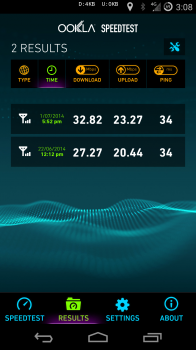
The bluetooth was able to connect to a myriad of devices without issue- car stereo, aftermarket bluetooth adapter, stereo headphones, Acer C720P Chromebook and an LG G Watch. The connection was perfect on each account. I’ve had occasional skipping issues with my Nexus 5 when streaming music via bluetooth but not a single one with my OnePlus One.
Wifi connection was similarly good as your would expect on a device in 2014. It has no issues connection to a dual band wireless N router. I did have issues getting into the settings of wifi when there was a theme applied. It crashed settings every time. Since I reported this the Cyanogen Inc team have fixed that bug and the July release will see that fix released to the wild.
The GPS worked extremely well no matter where I was, whether it was in amongst the city blocks or out in the wider, open, country areas. Quick lock to satellites was obtained each time but once the screen went off it lost the fine location lock. It was quick to return to the fine location lock once the screen was turned back on but it was annoying all the same.
Sound
In the past, all Android phones I have used have been disappointing when it comes to the sound. The OnePlus is much better than anything I have ever used. The sound it puts out is louder than any other phone I have used and although my ears are less than perfect it sounds amazing to me. Francois Simond was hired specifically to work on the screen and sound calibration and although he arrived late to the OnePlus One scene it seems that this dedication to achieving good quality sound has paid off.
The sound during calls was weak on earlier builds of CM11S but for me the the call quality and loudness is perfect. Whether via bluetooth or headphones, the sound output of the One was loud and crystal clear. There is no skipping of the sound while connected via bluetooth that some devices are plagued with. In the end a smartphone apparently should be able to make phone calls. The One had no issues producing HD Voice when connected to compatible devices. Some users are stillhaving issues with this but it’s something I haven’t noticed.
The stereo speakers on the bottom of the phone are loud and relatively crisp. They are louder than any others I have heard and may even give HTC’s boom sound speakers a run for their money (although I still prefer HTC’s placement of said speakers- I wonder how much of a stereo effect can be obtained when the speakers are so close together). Often loudness also results in distortion when we are talking about the small speakers included within phones but there is very little distortion with the speakers on the One. It is easily loud enough for noisy environments making sure that important call will not be missed.

Performance
Under the hood is a 2.5GHz Snapdragon 801(MSM8974AC) along with 3GB of RAM, the same as some other flagships but better than others. The difference here is that the OnePlus One does not have to also push an over-bearing skin as well as a boatload of useless gimmicks/apps provided by the manufacturer. It has a relatively lightly skinned version of Android, although you can theme it easily if you wish. The OnePlus One does not miss a beat and skips from one section of the OS to another without a moments hesitation. All games I’ve tried play well without any issues. I have tested it out on Sega Sonic Racing and Asphalt 8 and the experience was fluid, as it should be for a device with a best-available quad core processor.
My only issue with performance came with the use of the capacitive buttons. Their response wasn’t as fast as it should be and often presses weren’t even recognised by the OS but instead ignored except for the vibration of the button. Bugs have been logged with the CyanogenMod bug tracker so hopefully a fix is on the way. It seems that every day I am receiving several emails informing me that certain bugs have been squashed.
For those that put any credence in benchmarks at all my OnePlus One came in at a score of 38555, ahead of the HTC One M8 and the Samsung Galaxy S5. According to Antutu, the OnePlus One sits at the top of the pack of all phones when it comes to performance. In every single section the One scored “excellent” and I can certainly concur with that. Think of the speed of a Nexus device when it is new. This is that plus a bit more.
Software
Android OS
The operating system on the OnePlus One is the second phone to release with CyanogenMod on it (first was the Oppo N1) but the OnePlus One is the first where Cyanogen Inc have been involved since inception of the device. They have thus had input into the contents of the device and also have had time to optimise the OS to the device. While the CyanogenMod version built exclusively for the OnePlus One, CM11S, is based on Android version 4.4.2 and not 4.4.4, the most current release by Google (version L has not been officially released to the public and it still in beta). All of the security features associated with 4.4.3 and 4.4.4 though have been incorporated into the final build on the OnePlus One. OnePlus have stated that 4.4.4 will arrive on the OnePlus in the next few weeks (possibly with the expected bug-fix OTA at the end of July).

The OS is another place where the OnePlus One excels. Unfortunately it is also where the One falls down, albeit ever so slightly. As an Android enthusiast I am always looking at new hacks and tweaks to perform on my devices so I am no stranger to custom roms and the issues they can often bring. I expected CyanogenMod to be fast, full of customisations and rock solid. The first two they have achieved without a doubt, but the rock solid part is a bit lacking unfortunately. I don’t want to overstate this though, 97% of the time the experience is solid and without issues but it’s that other 3% that disappoints.
The issues I have come across include the OK Google hotword recognition not working due to microphone sensitivity, a ghosting of the folders on the homescreen, an apparent inability to distinguish between two taps at close intervals to each other, wifi settings crashing when a theme is being used, home capacitive button not registering activation, photosphere not working in Google camera, and auto brightness being very stuttery and slow to respond. Unlike most manufacturers though, with the OnePlus One you can log your own bugs with them view open issues and also those that have been resolved. It may seem like I have listed quite a few but considering it’s the first rom of this sort produced by Cyanogen Inc it’s a pretty good start. Remember the new implementation of all the usual customisations involved with CM have been accomplished using system APIs instead of root access and thus I expect it to get better with future builds as more work is done on the APIs and the OS itself. At this stage though it is not up to scratch for a mainstream production build. Maybe this is one reason for slowly releasing the device to consumers to limit the number of people getting devices that still need a bit of work with the software? I’d still consider it not up to the stability of a HTC or a Samsung operating system.
I do have a lot of respect for the Cyanogen Inc developers as the bugs are being squashed on a daily basis– the wifi settings crash bug, the mic not picking up the OK Google hotword, CyanogenMod account chewing up battery, the lockscreen camera being difficult to activate, the custom screen colour settings crashing, the shadow of an open folder being seen on the homescreen, the charging being shown as USB always,and the lockscreen wallpaper being borked at times have all been resolved, and will be in the “July OTA”. Not many other manufacturers let you know how they are going fixing issues and whether they are actually working on a fix at all.
Now that I’ve had my vent over the issues with the OS let’s get into the rest of it. Upon booting up the phone for the first time you are greeted with the usual Google login but after that you are also asked to sign into a CyanogenMod account which has limited use at this stage. I think it’s a bit redundant to be honest because Google have the same functionality built into their OS already. After signing into all of these you arrive at what looks to be the stock Google launcher but is in fact CyanogenMod’s own launcher, Trebuchet (think French pronounciation when saying it). Trebuchet is a very light weight launcher but it still has more options than Google’s launcher, which isn’t hard. You can make the icons bigger, you can apply an icon theme, hide apps from the app drawer, change the scroll effect and that’s about it. If you get this phone I cannot see a single reason to keep using this launcher when there are plenty of much better options out there such as Nova, Apex, Action Launcher and Yahoo Aviate Launcher just to name a few.
After installing a different launcher it’s onto customising your CyanogenMod experience. The CM11S experience is very similar to CM11 experience so if you have used CM11 before you will know what to expect (and you could probably skip this section). The settings pages are very similar except the status bar and notification drawer options are grouped into a single menu item, Interface, with CM11S. First up are the lock screen options. Cyanogen Inc have included a custom lockscreen of their own creating which is fairly bereft of options but looks amazing. The custom lockscreen allows a camera widget (swipe to the left) but that is the only functionality of the lockscreen. At this stage the camera widget is a bit hit and miss as to whether it opens the camera or not but Cyanogen Inc have fixed this and it will be arriving in a major bug-fix OTA update at the end of July. Turn off the CM11S custom lockscreen and you are greeted with the usual custom rom lockscreen (assuming no security) where you can slide the lock to one of the 5 shortcuts determined by you. The shortcuts can be apps, any activities or any number of the usual Android shortcuts.
Next up on the settings list is the Themes. The new CyanogenMod theming implementation is a nice addition and it’s good to see other custom rom developers integrating the open sources theming process into their roms. I could write an entire article on the depth of customisation this section brings. To start with there is an option to apply an entire theme pack which can include the style, wallpapers, lock wallpapers, fonts, icons, boot animation, ringtones, notifications and alarms. Cyanogen Inc and OnePlus have included a stock standard AOSP Halo theme as well as their own theme, Hexo. To help users find new themes they have included a Themes Showcase app where users can browse themes and purchase any they wish to.
Within the theming section users can also theme each of the above options independent of each other. In this instance I could apply an Android Version L theme pack but apply a different icon pack, Nox icon pack. Interestingly you can also change the boot animation which shows how deep the customisation goes.
Next on the CM11S settings is the Interface section. Within here the user decide to show or hide the clock, change the battery notification icon or display the battery percentage. The user can also choose to double tap the status bar to put the device to sleep. The quick settings panel can also be customised with a quick pulldown so that the quick settings panel can be pulled down with only one finger. The quick settings tiles can be changed from any large number of actions and the size of the tiles can also be changed so that there is four panels per row.
The notification drawer can also be customised to show some quick settings shortcuts too, just as CyanogenMod introduced a couple of years ago. Such is the way with custom roms and CyanogenMod, the choice is yours, the user. You are not dictated to by the manufacturer. Your phone, your way.
The navigation bar can also be customised although the amount of customisation is relatively minimal. You can add to the number of icons on the bar with a small selection- search, menu or leave empty. Other custom roms allow choices of anything you want to be added to the navigation bar, including app shortcuts. I’ve had it suggested to me that Google CTS does not allow customisation outside of the above options but we have seen other manufacturers do it, such as LG with the LG G2 Pro, so I am not sure why this is not expanded. Within this section the quick launch or navigation ring shortcuts can be modified to whatever app you want them to be. Once again other custom roms will allow more customisation with up to five icons as well as long press for each but CyanogenMod go for a maximum of three shortcuts with no long press option available. Better than stock AOSP and stock Google Android but still less than other custom roms. I suspect it is CyanogenMod wanting to keep things lightweight, fast and stable.
Within the interface settings menu is a section for Gesture shortcuts. CM11S has gestures that you can use to activate the camera (draw a circle), toggle the torch (draw a “V”) and to control music playback while the screen is off. While these are not customisable they are handy when you quickly need access to a torch or to the camera. It would be great if they worked 100% of the time but unfortunately that is also a bit hit and miss at this stage. I am assuming that their accuracy will be improved with upcoming updates as it has been reported to them as a bug. It is unknown whether they plan on increasing the number of gestures available or even making the gesture customisable in the future but if it is I suspect this would be along way done on their list of things to do.
Next section of note is the Display and Lights section. CyanogenMod allow the user to modify the auto-brightness levels to a brighter or darker level or changing screen brightness for each measure of ambient brightness (lux). While there are available apps on the Play Store that can perform this to a much more detailed level, most notably Lux Auto Brightness it is nice to see it added as stock onto a shipped phone. Also in the Display and Lights section is every Nexus user’s favourite section, the Pulse Notification Light. Within here you can choose any RGB colour, pulse length and speed of the light for whatever app’s notification you want. This will over-ride the standard notification colour included in an app’s code. Once again it’s nice for this option to be included within the rom although there are less options in here than there would be in an app from the Play Store such as Light Flow.
Unlike many manufacturers who have ignored the double tap to wake (DT2W) introduced to the mainstream by LG with their Knock On feature, OnePlus and Cyanogen Inc have included it as standard in the rom. “Voice on”, a feature of the Moto X, was heavily pushed on social media channels by OnePlus but has not been included in the final build. Official word is that the recording of “OK OnePlus” provided to Qualcomm did not meet their sound quality standards and thus rejected. OnePlus and Cyanogen Inc have started working with a professional recording company to redo all recordings of “OK OnePlus” and they expect to have the feature ready for release “in a month or two”.
Here is probably the best place to mention another bug bear I have with the OS. With early software releases the mic in phone calls was very soft. Cyanogen Inc fixed this with an OTA release but it seems they have not fixed the mic entirely. The mic is not at a level where it can pick up the “OK Google” hotword activation for voice commands unless you shout really loudly or if your mouth is within a couple of centimetres of the microphone at the bottom of the phone. A bug has already been resolved by the Cyanogen Inc team and will be included in the July OTA update. Once again it’s great to see a fix already but it is disappointing they released a phone with this bug on it in the first place.
Earlier I mentioned in the display section that the screen colour can be changed. It is in the display settings where this is done. While it is very limited when compared with other screen colour changing apps it is nice that you can change how vivid the colours look. It does not remove the yellow tinge to the screen but it can improve it to be a bit more what you may like or be used to.
Next up is the hardware buttons section where you turn on or off the navigation bar. Once the navigation bar is turned off you can then customise the home and menu button (yes I did say menu button, welcome to 2011). I have turned off the hardware buttons because of the software bug I was having with them mentioned above in the hardware section. That particular bug made the phone extremely frustrating and to me unusable such was the frustration. In saying this, I have not read of any other users having this issue so your mileage may vary.
CyanogenMod 11S also includes the usual profiles associated with CM roms. Firstly you can use the installed profiles and modify them or you can create your own from scratch. The profile can be changed using the settings screen here or via the power menu. Personally I would prefer automatic profiles that you can assign to a GPS location or attach to an NFC tag but there are other apps that can do that (I recommend using a combination of Tasker and Trigger).
CyanogenMod have long been at the forefront of device security when it comes to custom roms. Their messaging solution, WhisperPush, is included in the Privacy section. WhisperPush is an “integrated, system-wide secure messaging integration with compatibility with TextSecure….TextSecure is an open-source cross-platform (iOS and Android) client that encrypts your SMS messages both locally, and over the air when sending to other TextSecure users.” This solution will apply to whatever messaging app you decide to use, it does not need to be the stock AOSP messaging app included in the rom.
Also included is a privacy guard where you can turn on the guard for a specific app and each time it needs to use an Android permission (those things that you just skim over when you install a new app from the Play Store). This is a much more elegant solution to privacy and personal security than the current solution by Google of putting all permissions at once in the Play Store in my opinion. I hope that Google include this in future versions of their stock roms.
The developer settings options are also more detailed than those included in the stock roms of most other manufacturers. I won’t go into them but for those who like to tinker it’s nice for these to be included. One of my favourites is the ability to turn off the updating of recovery when installing system updates. In plain English it means that you can apply an OTA update even if you have a custom recovery installed and you will not lose the recovery (note that you will lose root access but it’s an easy fix by flashing the latest SuperSU in your custom recovery).
OnePlus and Cyanogen Inc have also opted to include a section normally exclusive to custom roms, performance. In here you can underclock your CPU (no over clocking is not possible without a custom kernel), change the CPU governor, the I/O scheduler and the profile (Power save, balanced or performance). An option I like is the ability to have the device decide for you on a per app basis which profile to use. So for the less CPU and GPU intensive apps it will choose power saving but for a game that is pushing the limits of the phone it will choose the performance profile where you would imagine the CPU is clocked at it’s maximum.
Skins
The standard CyanogenMod custom ROM has no skin at all on it. It is themed basic AOSP style, Halo. The CyanogenMod included with the OnePlus One, CM11S, does have a skin or theme applied. Hexo is what they are calling it with the theme throughout the customisation being hexagons, in keeping with the new Cyanogen Inc logo. Whether you call the overlay a skin or just a theme is up to you but I prefer to call it a theme as it just changes the appearance of the OS and very minimally at that. I like the way they have kept the changes from AOSP very subtle thus not affecting the speed of the device while keeping the design guidelines that Google have implemented in AOSP.
For those who prefer the AOSP Halo theme (for me it’s basically the same as Hexo anyway) that has been included in the OS as well so all you have to do is apply that in the Themes section and you have a stock AOSP theme. There are a multitude of other themes available for the OS and these can be viewed within the Themes Showcase app or in the Play Store. Keep in mind that these themes on the Play Store are made by third party developers so the quality may vary but remember you do have 15min to refund your purchase should you change your mind. A couple of dollars per theme on average is money well spent to change the entire look of your device. Don’t forget, you can pick and choose items from within a theme to apply. I like a dedicated icon pack myself as it is usually more thorough in the number of apps it provides icons for.
Bundled Apps
There are no gimmicks involved with any of the OnePlus bundled apps. They have included basic functionality that I believe Google should include themselves in their own devices. Nothing fancy, just the basic nuts and bolts for everyday use.
There is a file manager which is a clean, basic file manager that if selected in settings (and you have rooted your phone) allows access to the system and data partitions to perform actions within there. It is the standard file manager that has been included in CyanogenMod for quite a while.
Also included is audioFX, a well designed equaliser app that has limited functionality but provides the basics. There are other equaliser apps around that have more functionality but to include an equaliser is essential in my opinion. Unless you are an audiophile the functionality ausdioFX provides will be sufficient for you.
There is also an app included called Screencast which I was quite excited about at first. To me it seems from the name that the app would cast the screen to a Chromecast. Unfortunately not. The app is a screen recording app and it “casts” the screen to an mp4 file. Nice addition but there is some false advertising although eventually you could then cast that to another device and eventually get it to your Chromecast. It’s not really a big issue with the Chromecast and Android updates coming later this year which will allow true screencasting.
Accessories
Companies are finally beginning to realise that we want official accessories that are made by the same company that made our device so that it fits like a glove. Oh, and we don’t want to pay through the nose for them (yes Google, I am looking at you and your Nexus accessories). OnePlus have realised this and are in the process of producing a range of cases, covers and style swap backs (in different colours and materials such as denim, bamboo and kevlar). At this stage on a clear back cover and a blue and white flip case are available but expect the full range to be available soon.
OnePlus One
- 5.5in 1080p LTPS IPS display with TOL (401 PPI)
- 2.5GHz Qualcomm MSM8974AC Snapdragon 801 – quad core CPU
- Adreno 330 GPU
- 3GB RAM
- 64GB storage (16GB available but rare)
- 13 Megapixel – Sony Exmor IMX 214 rear camera
- 5MP front camera
- Radios
- 2/2.5G: 850/900/1800/1900
- 3G: 850/900/1700/1900/2100
- 4G LTE: 700/1700/1800/2100/2300/2600MHz (Bands 1/3/4/7/17/38/40)
- Bluetooth 4.0, Dual-band Wi-Fi (2.4G/5G) 802.11 b/g/n/ac
- NFC
- Internal GPS antenna + GLONASS Digital Compass
- CyanogenMod 11S based on Android 4.4.2
- 3100mAh LiPo battery
- 152.9 x 75.9, 4.6-8.9 mm curved rear, 162gms
The OnePlus One is a very solid offering from a startup company that wasn’t even in existence 12 months ago. They have taken the approach to build a phone that enthusiasts would love. They have certainly done a good job at that with the design being every bit as classy and good looking as promised. The build is solid and feels really well built (of note it was built by their sister company Oppo). The hardware under the hood is nothing short of high end. The Qualcomm Snapdragon processor is as good as any other phone is offering at the moment with as much RAM as well. If you purchase this phone you will know that it will not be out of date specs-wise for a long time.
The software shows why those who flash custom roms do so. The amount of customisation available in the ROM should make other manufacturers sit up and take notice. We want to be able to make our device look and act how we like it. The ability to have either onscreen buttons or capacitive buttons is a nice touch as well. My only gripe came with the bugs that are still present in the ROM. These bugs seems to be being resolved very quickly as they arise and OnePlus and Cyanogen Inc should be commended for that. Once all these bugs are squashed I believe this device will certainly be able to live up to the “2014 Flasgship Killer” moniker given to it by OnePlus. By the time anyone reading this review gets the phone most of the bugs I found will be squashed, with a big OTA bug fix coming in late July.
The only issue is the availability of the phone. At this stage, although invites are currently rolling out a lot faster than before, it is still difficult to obtain an invite to purchase a phone. OnePlus are ramping up production as much as possible but they are still selling as fast as they can make them. How to get an invite? Join the OnePlus forums and be there when invites land. If you are lucky enough to get an invite to purchase a device you will need to have the device shipped to a release country (Hong Kong, UK, USA etc) and then forwarded to you from there. The 64GB Sandstone Black version will set you back $350US, and by the time you add all the shipping fees it will cost around $440AUD by the time the device lands on your doorstep.
If you are interested in purchasing a OnePlus One, we here at Ausdroid have scored a few invites to give out to our readers. Head on over to the announcement and enter the contest to have a chance to win this flagship killer. It is well worth the effort.

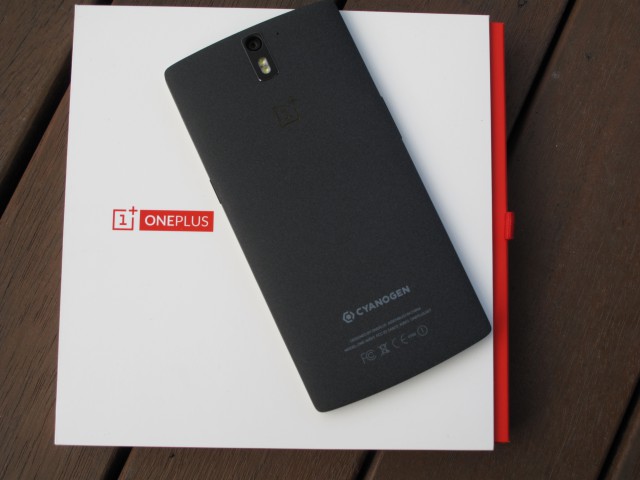
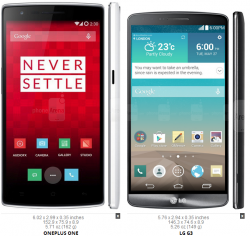
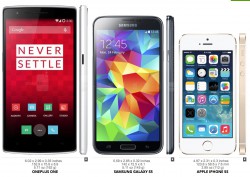

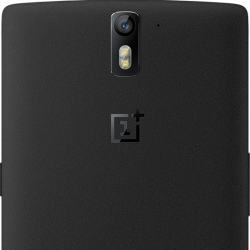
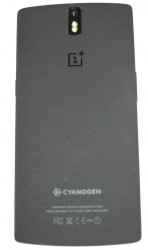

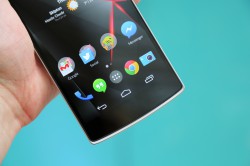
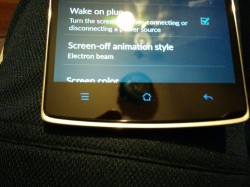
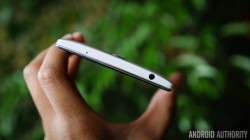
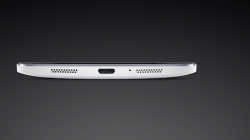
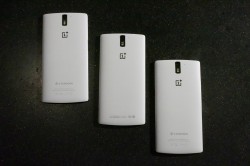
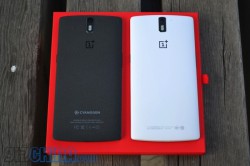

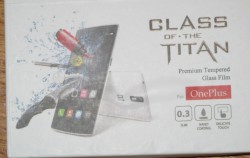

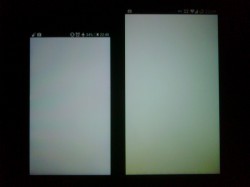


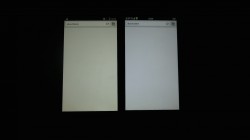
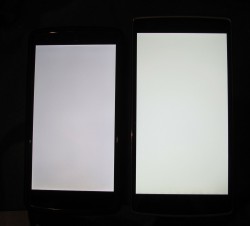
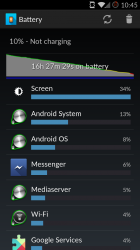
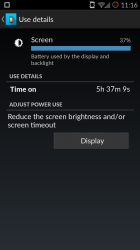






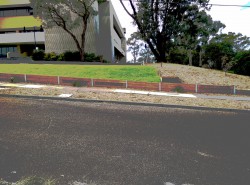








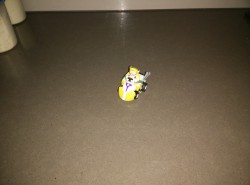
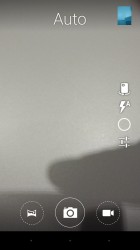

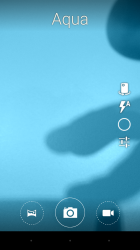
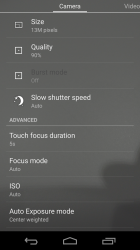

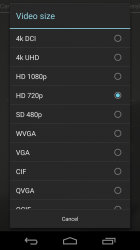
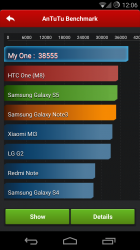
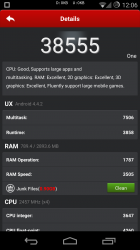
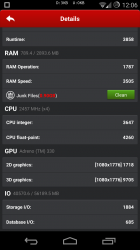
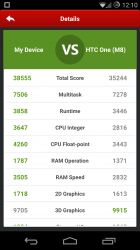

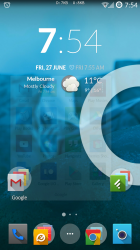

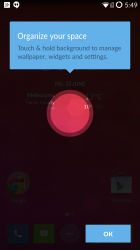

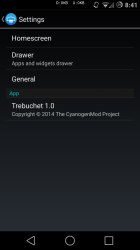
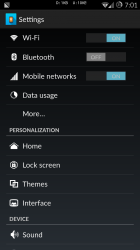
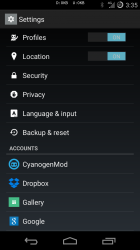



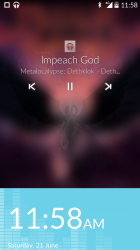
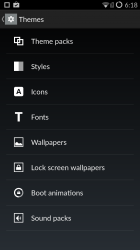
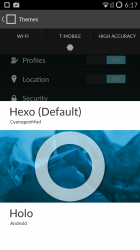

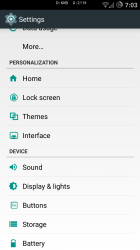
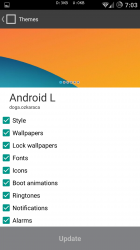
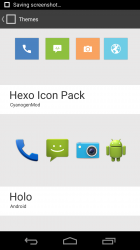

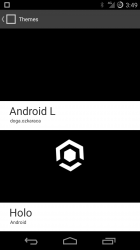


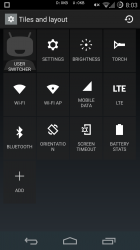




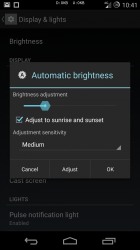

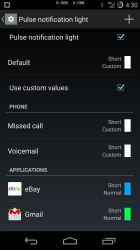
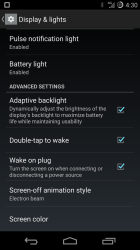
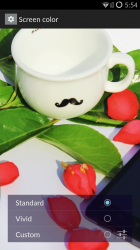
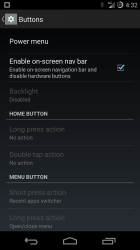

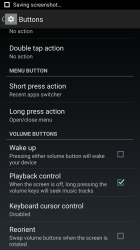
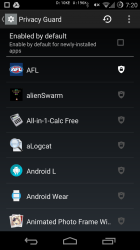



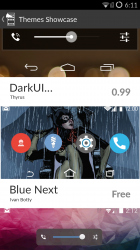

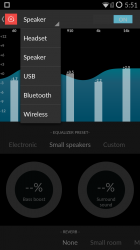
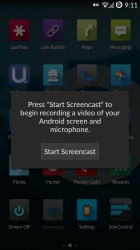





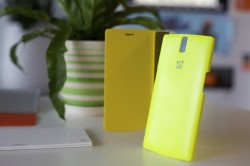
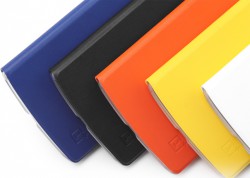
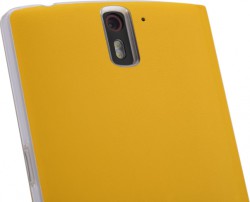



Correction: OnePlus One does NOT have stereo speakers, but only dual mono speakers. This fact has been pointed out in both of these video reviews:
Erica Griffin from http://AngelOfTech.com @20:04 http://youtu.be/0p4XuHF2BFY?t=20m04s
Josh from http://androidauthority.com @4:45 http://youtu.be/Y9GlOwdai24?t=4m45s
OnePlus Ones specifications mistakenly used to say “stereo speakers”, but has now been corrected to “dual speakers”, without mentioning that fact that it’s mono only.
Scott. I have heard that after updating CM11 that battery life takes a significant hit. Did you find this in your use. Given its significant size, if the battery is not up to scratch then this may kill it for me. I am torn. Otherwise I am thinking Sony Z2 or LG G3. Note enamoured with with SG4 after a move from HTC. If they do not get this phone in people’s hand soon it will not be a flagship killer. I have heard OnePlus are selling at a loss. Perhaps they are limiting supply to avoid losses. If so,… Read more »
minor typo: in the first set of pics, on the left, you’ve got an xperia z2 labelled as a sgs5.
I have to say, the one thing I find most disappointing about the OnePlus One is the speaker placement. Stereo speakers oriented for portrait mode? The only time I can see myself caring about stereo sound from inbuilt speakers is when watching videos, which are almost exclusively in landscape orientation. HTC got that right, I think.
Still looking forward to my OnePlus One, though.
Cons: Menu capacitive button?
It really isn’t con on a phone since the buttons are always easily accessible due to the smaller dimensions of a phone and the way most people hold their phone…just use your thumb to access or the finger on the other hand.
Pros: Capacitive buttons save screen space.
As mentioned in the article Cyanogenmod lets you use switch to on-screen buttons even if capacitive buttons are available.
It’s a different case with a big 10inch tablet.
with regards to the capacitive menu button, I meant that there is no need for any menu button anymore. If you have capacitive buttons why not the same as the soft buttons, back, home and recents (and around the correct way would be nice). The screen is 5.5in to start with. i don’t see screen saving as a big deal tbh. When you have used soft buttons you will wonder why anyone ever uses capacitive IMO. The capacitive buttons were just a bad experience for me on this phone. But this is Android and maybe this phone epitomises Android best… Read more »
You know you can changed the capacitive menu button to another function right? I have mine set as the task switcher.
And I used to have soft buttons, coming from a nexus 4, but I’ll use the capacitive any day. What else is a bezel good for?
Great review! Those battery results are amazing
Great review Scott. Hopefully they will eventually make them available in Australia without having to use a Freight Forwarder so more people can get their hands on one.
Anyone can use a freight forwarder, surely?
Thanks for the review. Surprisingly, I received an invite via email earlier this week. I’d lost interest in the phone, and so gave it away to someone on Whirlpool. I’m not sorry. It might be a reasonable phone, but the months of hype and continuous poor availability have been tiring, and the phone is too big anyway. Bring on the Nexus 6!
yeah I understand mate. To be honest if they had taken much longer I’d be owning a G3 instead myself at the moment. There is always something else around the corner.
It is a great phone though. I finally rooted it last night and now am running CM11 nightly with xposed.
Nexus 6 is .5 inches bigger. ouch :p